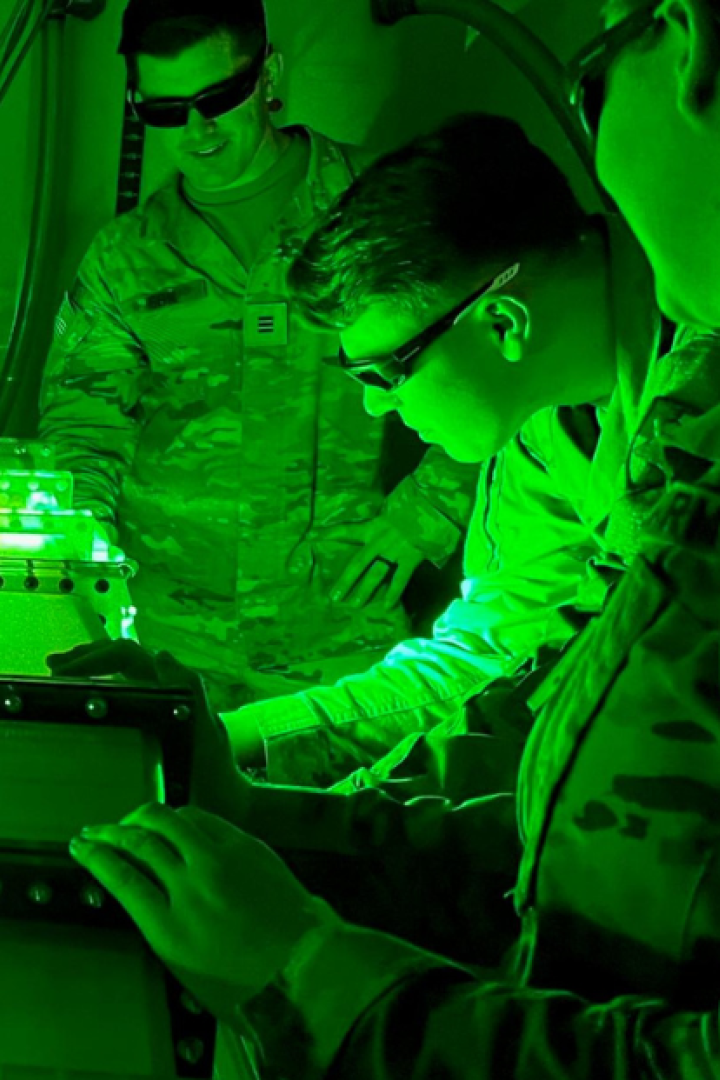Research at West Point
The U.S. Military Academy (USMA) aims to develop agile, critical-thinking leaders of character through research focused on real problems facing the Army and the Nation.
Research at West Point
The U.S. Military Academy (USMA) aims to develop agile, critical-thinking leaders of character through research focused on real problems facing the Army and the Nation.




Developing Leaders of Character Through Research
Research is a strength of the U.S. Military Academy (USMA) at West Point. It develops cadets by providing context to the classroom and is central to the USMA's vibrant and professional faculty. West Point cadets are driven, its faculty are world-class, and the Army applies that combination to its most difficult problems.
Cadets are involved in all of the research conducted at West Point - keeping in mind the USMA's mission to "build, educate, train, and inspire the Corps of Cadets to be commissioned leaders of character committed to the Army values and ready for a lifetime of service to the Army and Nation."
AI-Driven Leadership Development
Explore West Point's approachTackling Complex Problems: For the Nation and the World
USMA is the intellectual center of the Army. West Point contains the facilities, innovative thinkers, and collaborative spirit to address some of the biggest challenges facing the Army and nation.

Engineering
From robotics to space and high-altitude research to environmental engineering, USMA runs several engineering-focused research centers and institutes that engage in research designed to aid the warfighter and in national defense.
Explore engineering centers and institutes
Humanities, Social Sciences, and Law
USMA's contribution to research is not limited to STEM. USMA hosts several centers and institutes that leverage research from the social sciences, humanities, and law to tackle some of the most pressing issues facing Army and defense leaders.
Explore humanities, social sciences, and law centers and institutes
Cyber and Simulation
USMA is innovating in the realm of cyber and simulation research, leveraging state-of-the-art facilities and talented scholars who are bridging the gap between theory and practical application on cutting edge projects in support of national security.
Explore cyber and simulation centers and institutes
Mathematical and Physical Sciences
USMA’s physical science and mathematics programs spearhead a number of impactful research initiatives engaging not only cadets, but scholars and practitioners from across academia, the government, and private industry.
Explore mathematical and physical science centers and institutes
"At West Point, we believe that experiential learning is key to developing the leaders of tomorrow. By providing our cadets with hands-on experiences, we prepare them to excel in complex and unpredictable environments and to lead with confidence, competence, and character."
Projecting Lethality
Explore this year's intellectual theme


Undergraduate Research at West Point
At USMA, cadets work with dedicated faculty on cutting-edge research in support of real-world problems across various disciplines, all while maintaining a focus on becoming leaders of character.

Impactful Partnerships
West Point brings together cadets, faculty, and research partners from government, academia, and industry in an environment that deliberately fosters collaboration, integration, and synchronization of ideas to address the Army’s and nation’s challenges.





Supporting Excellence
West Point provides a number of resources to support cadets and faculty in planning, conducting, and publishing their innovative and impactful research.
Research Facilities and Capabilities

The Robotics Research Lab is housed in the Robotics Research Center (RRC), the academy's premier resource for technical expertise and academic scholarship in the area of robotics and autonomous systems (RAS).

A dedicated modular reconfigurable space, the West Point Simulation Center Arena can support multiple services that include simulated weapons ranges, augmented reality, virtual reality, high-definition wall projection and motion capture.

The Link will give cadets and faculty new options for collaboration and study, while cadet humanities and fine arts clubs will have dedicated modern studios with the technical specifications required to rehearse and create works of art.

The Protein Biophysics Group (PBRG) integrates modern biophysical methods with cellular models of toxicity, and aims to understand the fundamental rules governing protein dysfunction in pathology.

Intelligent Cyber-Systems and Analytics Research Labs develop models and tools for collective intelligence, likely augmented by interacting with human cyber analysts and decision-makers.

Internet of Things Research Lab explores the communication between objects connected over IP networks and other internet-enabled devices and systems to secure network architectures and protocols while enabling data-driven insights from interconnected systems.

Material Culture Studies seeks to leverage its unparalleled collection to enhance historical perspectives for both cadets and faculty alike. With access to rare and plentiful artifacts, material culture takes history out of the books and places it directly into the hands of cadets.

Multi-Functional Materials Laboratory (MFML) group consists of four faculty members and over 20 undergraduate researchers. The lab’s focus is to develop electro/photo-mechanical materials that serve as both structural, energy storage, and sensor materials.

Biodefense Protection Technologies Laboratory Soldier protection is an Army warfighting function. BPT-L investigates and develops novel biology and engineering technologies to improve Soldier protection in the areas of force health and CBRN operations.

A cutting-edge engineering center worthy of America’s top engineering programs, the Cyber and Engineering Academic Center (CEAC) is a modern, 136,000-square-foot state-of-the-art academic facility that will enable and inspire collaboration across engineering disciplines and facilitate a powerful and broad impact within STEM scholarship and industry.